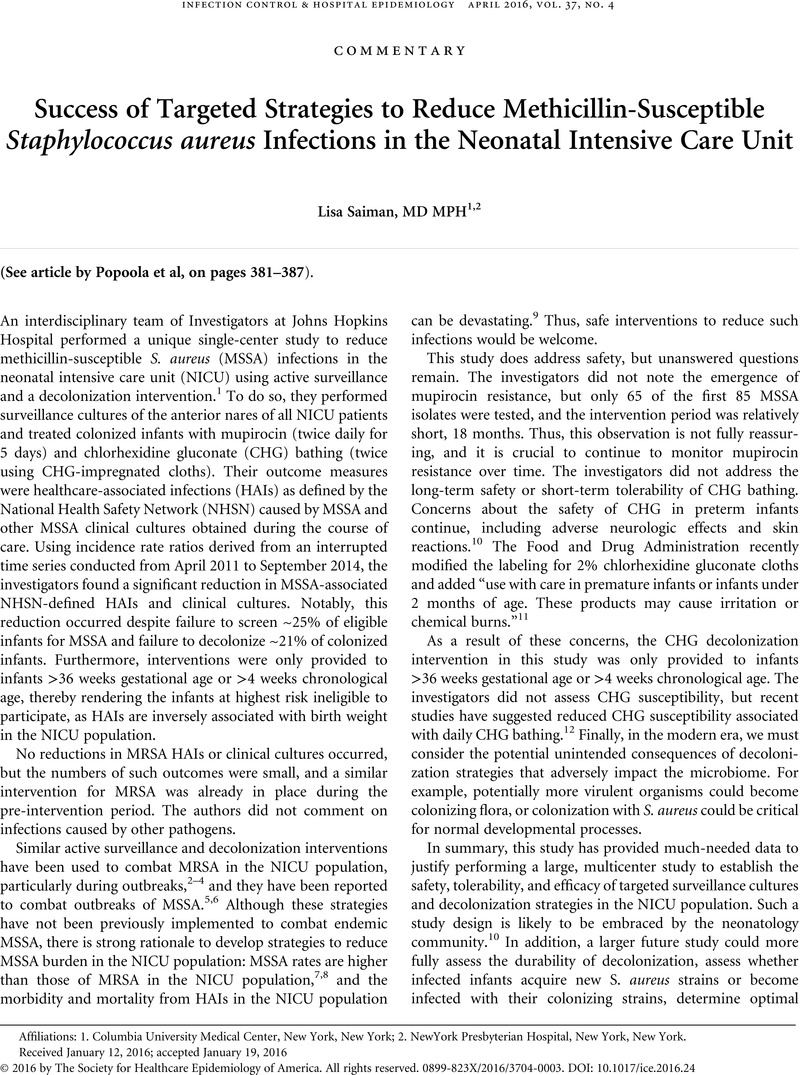Crossref Citations
This article has been cited by the following publications. This list is generated based on data provided by Crossref.
Clock, Sarah A
Jia, Haomiao
Patel, Sameer
Ferng, Yu-Hui
Alba, Luis
Whittier, Susan
DeLaMora, Patricia
Tabibi, Setareh
Perlman, Jeffrey
Paul, David
Zaoutis, Theoklis
Larson, Elaine
and
Saiman, Lisa
2017.
Infant Colonization With Methicillin-Resistant Staphylococcus aureus or Vancomycin-Resistant Enterococci Preceding Neonatal Intensive Care Unit Discharge.
Journal of the Pediatric Infectious Diseases Society,
Vol. 6,
Issue. 3,
p.
e144.



